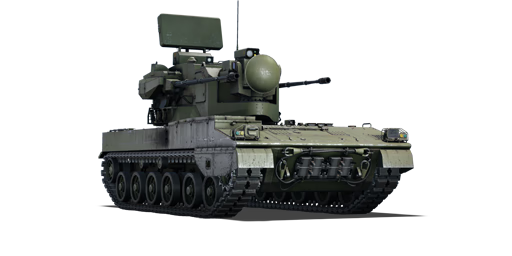



The PGZ09 (Chinese: PGZ09式自行高射炮; industry code WA3001) has been in service with the PLAGF since the late 2000s, alongside older systems and SAM systems for field and infrastructure defence. The Oerlikon KDA (GDF-001) was introduced to Mainland China in the late 1980s and licensed for domestic production in 1990 as the PG90, before the 1993 sanctions against the PLA; the licensed PG90 was then redeveloped into the newer PG99-35-2 systems, comparable with the GDF-003 system.
Meanwhile, to address the need for a longer-range SPAA system with accurate 35 mm autocannons and armed with paired SAMs, the PLAGF initially considered importing the 2S6 Tunguska as a solution. Subsequently, projects based on the chassis of NORINCO's new wheeled platform were also developed as technological demonstrators for the turret system. This ultimately led to a domestic solution with a new universal artillery platform and provisions for two pairs of infrared-homing missiles on either side of the turret. For unknown reasons, the production model of this new SPAA lacked the missiles, despite their presence on both the prototype turret developed by a university in Mainland China and its intended production model, which would soon become known as the PGZ09. The PGZ09 serves as an alternative platform for utilising domestic AHEAD rounds to intercept incoming missiles or unguided projectiles within detection range. The earlier PGZ04A would then function as a last line of defence if targets breach all preceding layers of protection.
Introduced in Update "Red Skies", the PGZ09 is the Chinese equivalent to the Flakpanzer Gepard and Type 87, designed to intercept aerial targets such as helicopters, drones, or cruise missiles. With its high off-road speed, advanced electronic system featuring separate search and tracking radar, electro-optical tracking system, second-generation thermal sight, and 35 mm AHEAD rounds, it can prove deadly to both careless air and ground targets, providing field air defence for its allies wherever deployed.
| Belt | Belt filling | Armor penetration (mm) at a distance: | |||||
|---|---|---|---|---|---|---|---|
| 10 m | 100 m | 500 m | 1000 m | 1500 m | 2000 m | ||
| API-T/HEI-T | 75 | 72 | 62 | 51 | 42 | 35 | |
| HEI-T/HEI-T/HEI-T/API-T | 75 | 72 | 62 | 51 | 42 | 35 | |
| API-T/API-T/API-T/HEI-T | 75 | 72 | 62 | 51 | 42 | 35 | |
| AHEAD/AHEAD/AHEAD/AHEAD | 59 | 57 | 51 | 44 | 38 | 33 | |
| APDS/APDS/APDS/APDS | 127 | 125 | 118 | 110 | 102 | 95 | |












Mobility | |
|---|---|
Protection |
|---|
Firepower | |||
|---|---|---|---|